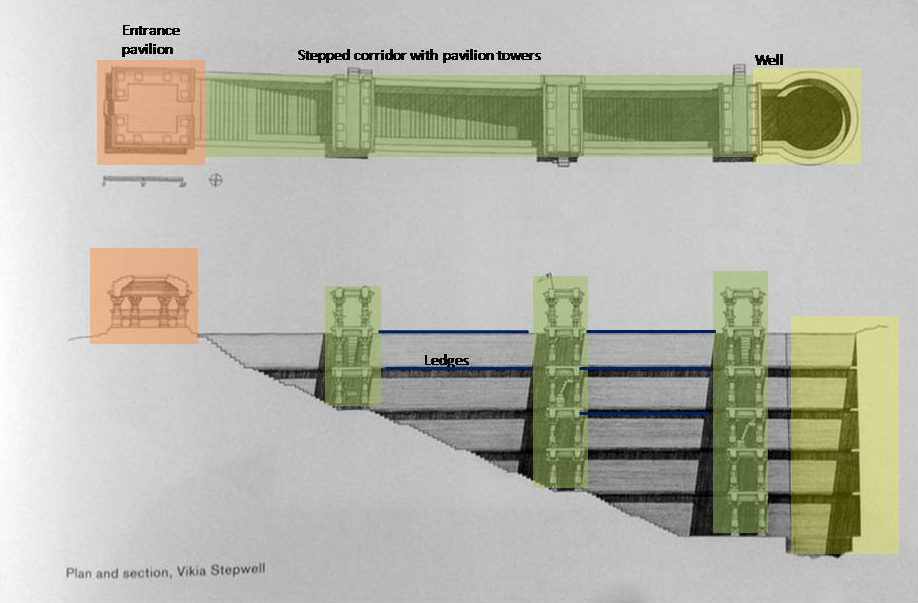STEP WELL – An Idea of Adoption
we studied in school that Cherrapunji is receiving the largest volume of rainfall in the world. Even though, it experiences acute water shortages. People have to walk far away to collect water for domestic use. Whereas, Rajasthan has a different story to tell. It does not receive even half the rainfall as received by Cherrapunji, but sufficient water is always available while adopting water conservation structures as exists.
These structures are called ”STEPWELL” having the combination of ‘well’ and ‘steps’ in series leading towards the water source almost up to five to six-story below ground. Water was seen as an important aspect of human life, especially in dry regions. Most of them were found around the desert areas of Gujarat, where they call it VAV and in Rajasthan, they call it BAORI.
The stepwell was one of the water conservation innovations, primarily focused in the northwest region of India. This phenomenon evolved as fundamental to life in the driest parts and further developed as a functional structure in other parts of India. You can see the concentration of step wells in the dry regions of India by overlaying the below visuals.
The structure comprises a series of stone steps descending from ground level to the water source. People needed only to descend a few steps to reach the water after the rainy season when the water level rises.
The working principle of a stepwell is very simple. Well provides access to an aquifer and is filed by ”seepage”. Water was mainly used for drinking purposes since water infiltration into the aquifer was the process of water purification. Stepwells provided cleaner water than other sources such as reservoirs and ponds. The major benefit of stepwell was to eliminate water exposure to sunlight and ensure throughout water supply.
Stepwells were considered as an important monumental structure to express the value of sustainable communities beyond its functional purpose of the source of water supply. They were constructed outside the city radius located at a critical point on a road transportation route. Being an underground structure, they were used as a cool shelter for passing caravans and local communities. That was also a place for animals and birds, bees, squirrels, parrots, and pigeons.
The provision of water was seen in a divine context. Therefore, step-wells were preserved as a memorial due to their inherent relationship to water by establishing the place as a specific religious capacity for worship and social practices. Wells were constructed within the religious complex or adjacent to a temple structure almost in all cases.
Stepwells were often promoted by the royal families, wealthy and powerful people, who hired masons and build for them to demonstrate their wealth and power by influencing over the fundamental needs of the community. Sometimes by monks and villagers for a noble cause through donations. Stepwell often has complex carving and painting displaying an Indian culture on the walls to preserve an idea of adoption of the structure by the community.






